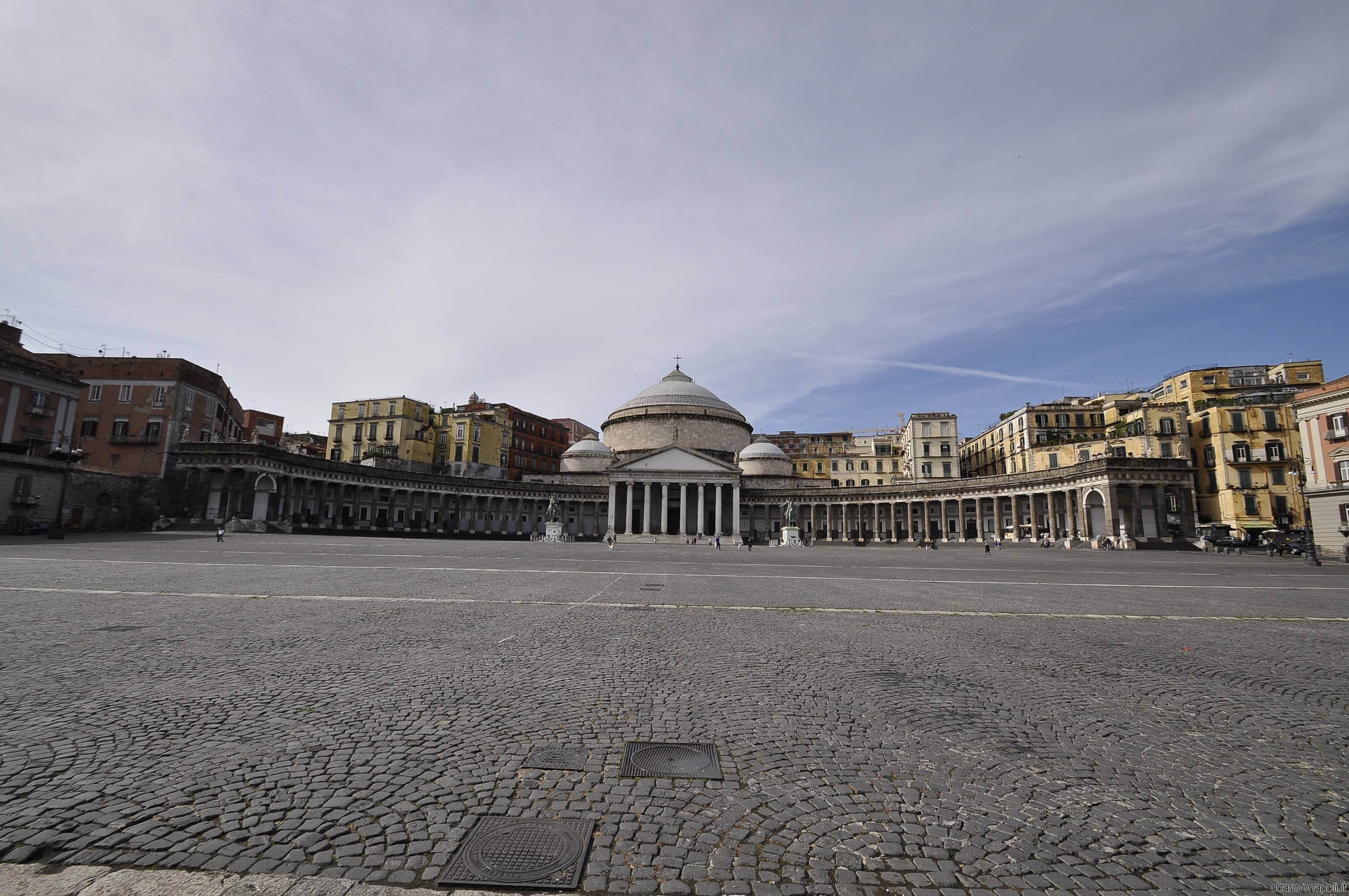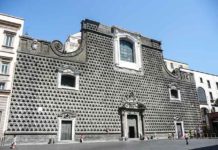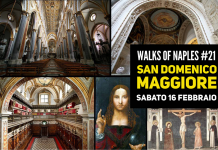On last Thursday before Lent 1552, Saint Filippo Neri asked the believers of Rome to visit seven churches, to contrast the pagan feast of Carnival. Seven holy places in one day, just like a pilgrimage. Nowadays, the same old-age “made in Rome” custom takes place in Naples on Holy Thursday.
Naples is called the city of one the hundred bell towers, rich as it is of wonderful and important churches and basilicas. It is really hard to make a choice, but it is a good compromise suggesting the favourite destinations of the traditional “tour of faith”. And God will surely forgive us if the churches proposed are nine instead of seven.
In piazza del Plebiscito stands the Real Basilica pontificia of San Francesco di Paola. Ferdinando I of Bourbon commissioned this building as a votive offering to the patron saint of the Reign of Two Sicilies, who helped him taking back the Reign usurped by Gioacchino Murat. The construction of the church began in 1817 under the guide of the architect Pietro Bianchi (1787-1840) and it was inaugurated by Pope Gregory XVI in 1836.
[charme-gallery]
It is one of the most famous Neoclassic basilicas of Italy and its circular shape recalls the Roman Pantheon. The most striking characteristic of this impressive church is the wide porch, supported by 38 Doric columns. The majestic interior has three domes: the central one is breathtaking with its 53 metres of height and the 34 marble columns supporting it. The entrance is flanked by two chapels with paintings by Luca Giordano, Nicola Carta, Pietro Benvenuti and Tommaso de Vivo. The high altar, covered with precious stones, was moved in 1835 from the church of Santi Apostoli in via Anticaglia.
In piazzetta Monteoliveto, between piazza del Gesù Nuovo and piazza Carità, stands the church of Sant’Anna dei Lombardi, also knowns as Santa Maria di Monteoliveto. Built at the beginning of XV century in Gothic style, this church was restyled in the course of XVII century according to Baroque taste.
Monteoliveto offers numerous parallels with Florentine Renaissance style, for example in the circular shape of the three chapels Correale, Piccolomini and Tolosa. This church is famous for the paintings decorating the old Refectory, made by Giorgio Vasari with the help of Raffaellino del Colle.
[charme-gallery]
The vaults present three cycles of frescoes, devoted to Faith, Religion, and Eternity. It is said that Vasari wanted to refuse the work because of the Gothic interiors and the lack of sufficient light, but in the end the artist from Arezzo succeeded in giving a bright luminosity to the wide room, covering all of its vaults with stucco decorations. (to be continued)
(translated by Claudia Romagnuolo)

 Italiano
Italiano














